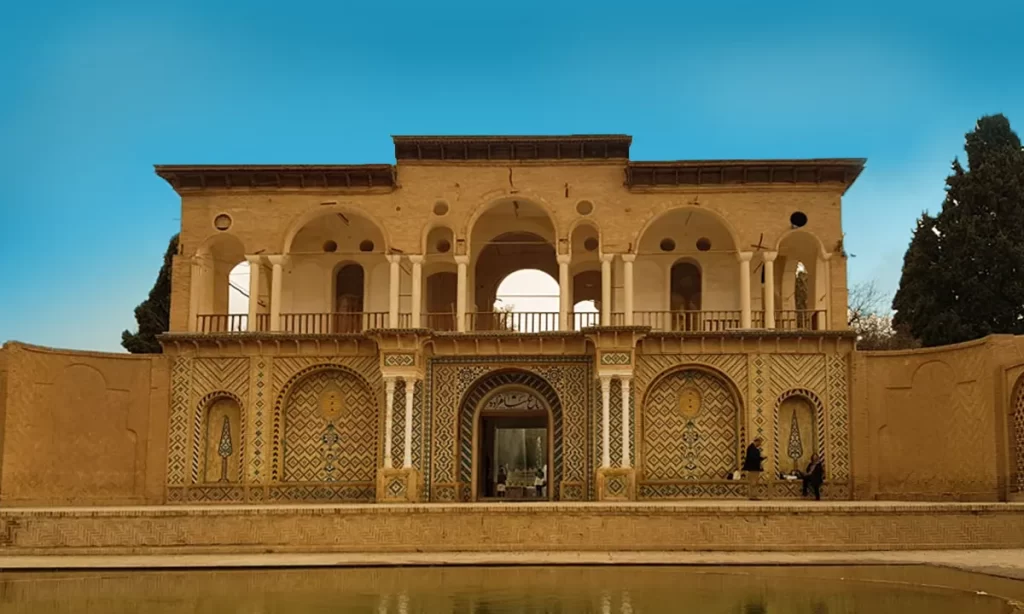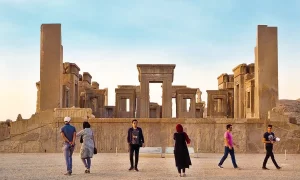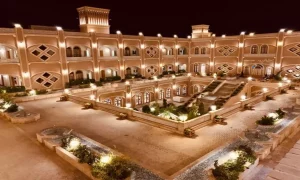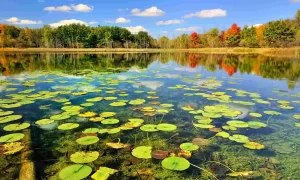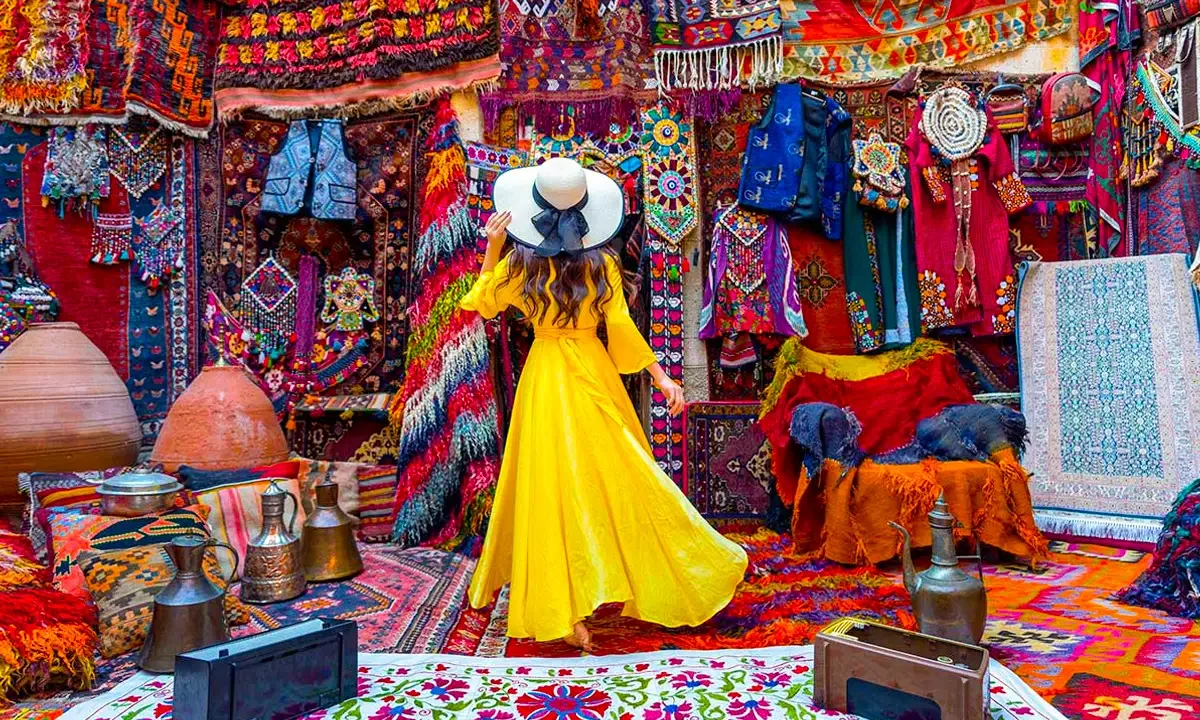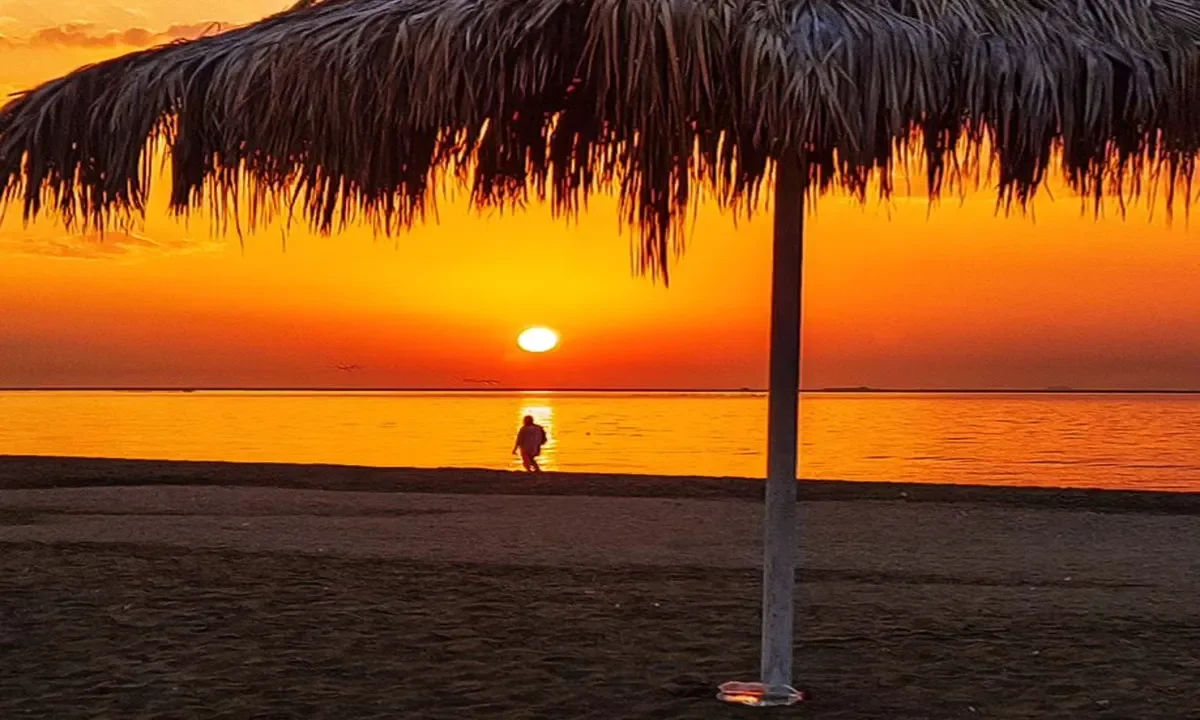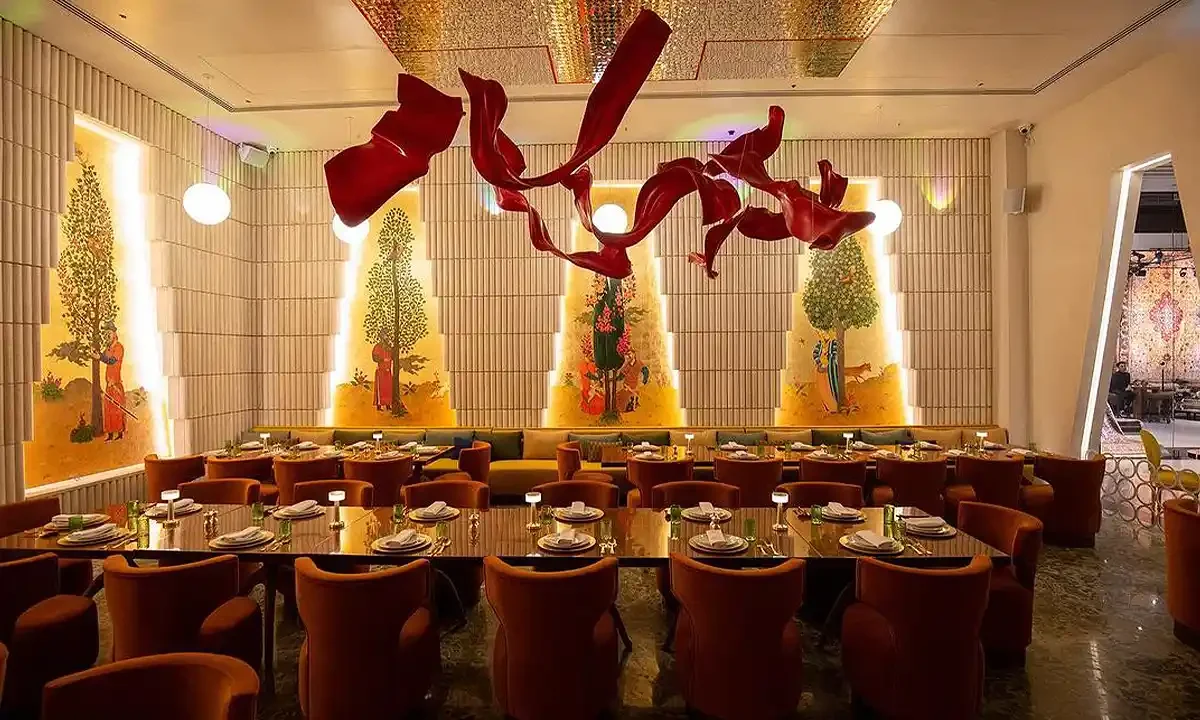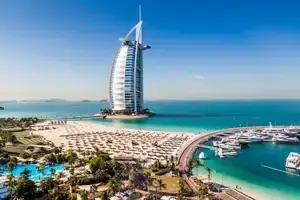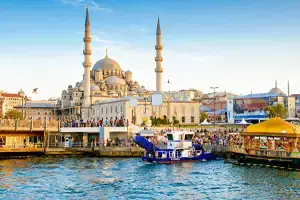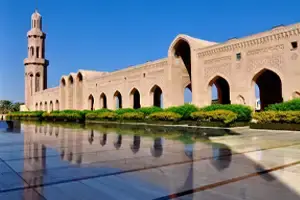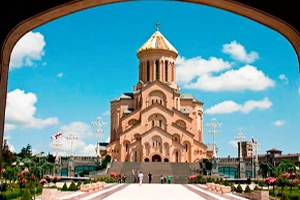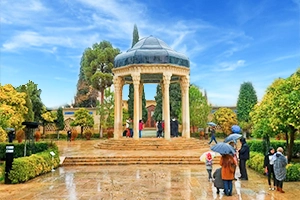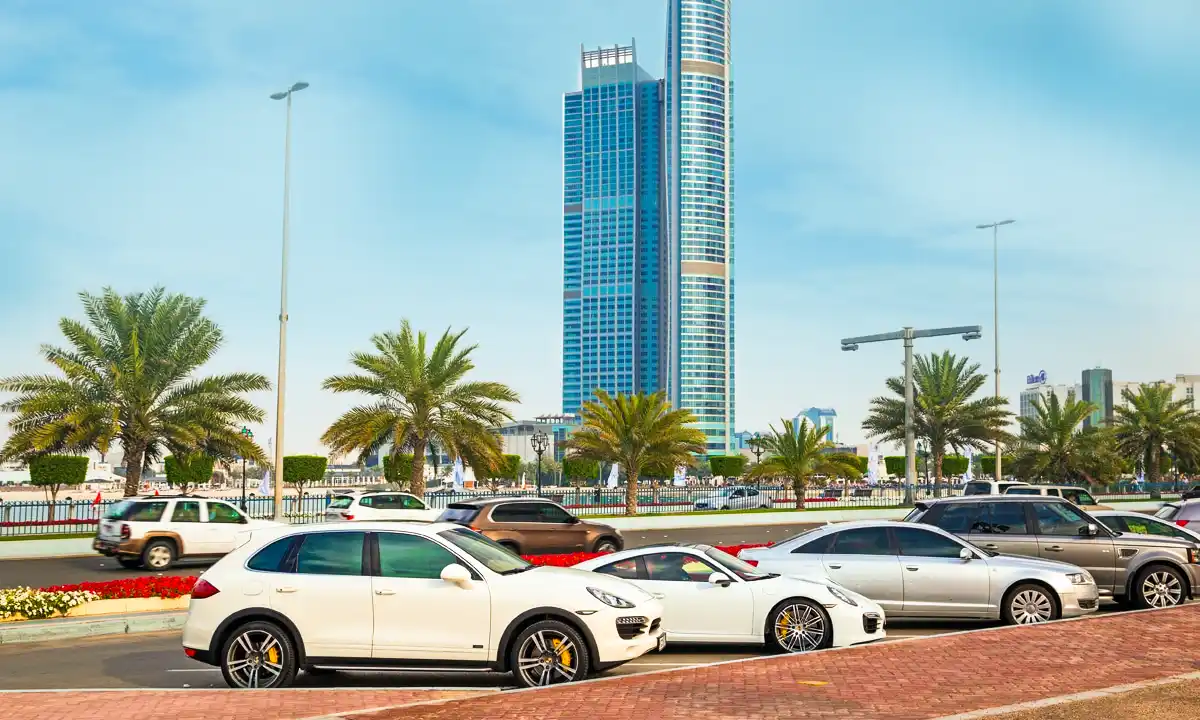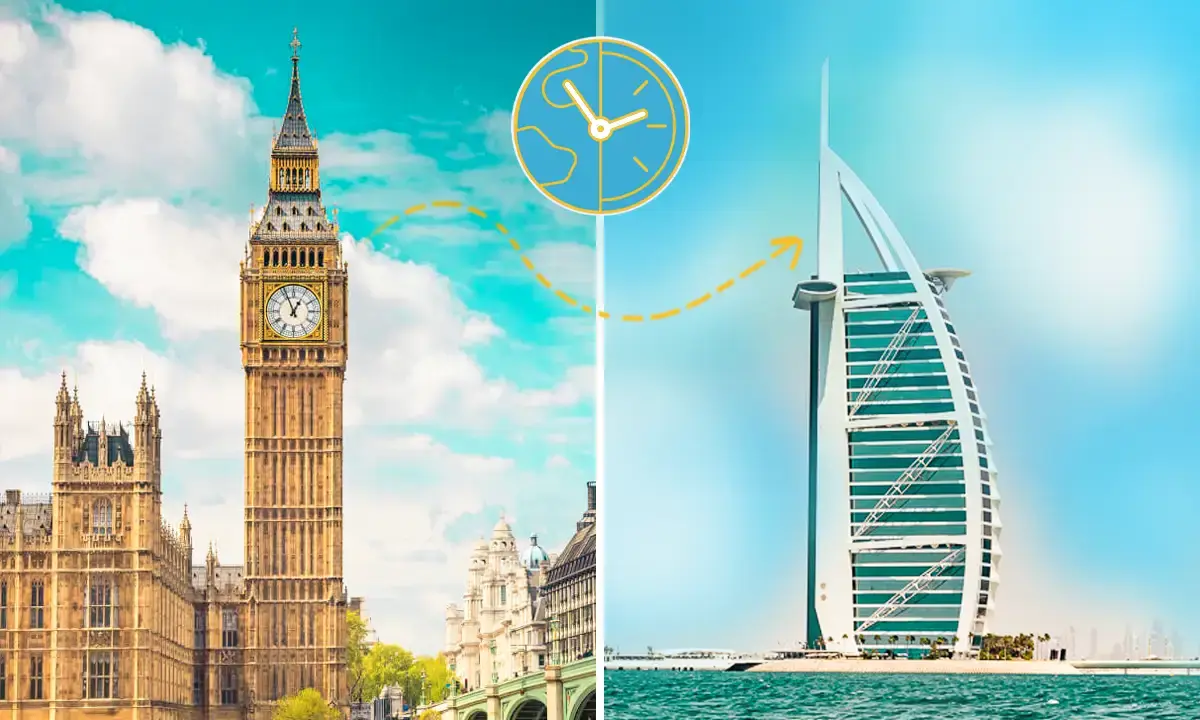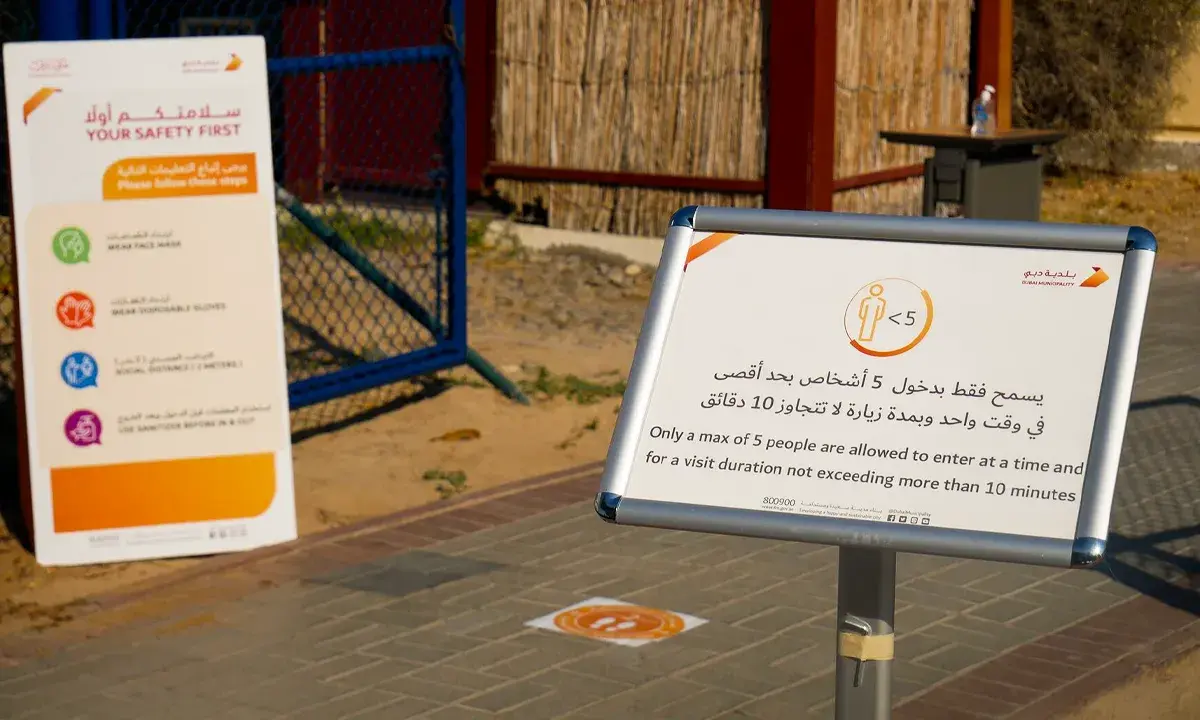Things to do in Kerman: Kerman, a historic city in southeastern Iran, stands as a vibrant testament to cultural heritage and natural beauty. Situated on the edge of the expansive Lut Desert, it combines historical marvels, including UNESCO-listed sites, with stunning landscapes. With a history spanning over a thousand years, Kerman has served as a cultural junction, enriching its legacy with every civilization. Highlights include the majestic Bam Citadel, the tranquil Shahzadeh Mahan Garden, and the awe-inspiring desert vistas. Explore Kerman to discover the essence of Persian culture and the splendor of Iran’s natural landscapes.
Historical and Cultural Sites
- Historical and Cultural Sites
The Ganjali Khan Complex, nestled in the heart of Kerman, is a striking example of Safavid dynasty architecture, dating back to the 17th century. This architectural masterpiece was commissioned by Ganjali Khan, who was a governor under Shah Abbas I. The complex is an amalgamation of various structures including a bazaar, caravanserai, bathhouse (hammam), mosque, and a water reservoir, each serving a distinct purpose in the social and economic fabric of the time.
The bazaar, with its intricate brickwork and vaulted ceilings, remains a bustling marketplace where visitors can immerse themselves in the rich tapestry of Persian culture. The caravanserai, designed to host weary travelers, reflects the hospitality that is a hallmark of Persian tradition. The bathhouse, now a museum, showcases the sophistication of Persian engineering and social customs related to cleanliness and leisure. The mosque, with its detailed tile work and serene ambiance, continues to be a place of worship and reflection.
The complex’s architecture is a testament to the ingenuity of Persian architects, who mastered the art of creating cool, serene spaces amid a harsh desert landscape. Its cultural significance lies not only in its historical function but also in its role as a center of social life, offering insights into the daily lives of the people during the Safavid era.
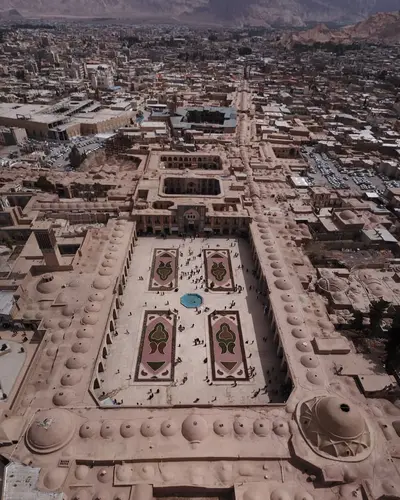
- Arge Bam: The world’s largest adobe structure
Arg-e Bam, the world’s largest adobe structure located in Iran’s Kerman province, is a testament to the ancient architectural brilliance of the Iranian plateau. With a history spanning over 2500 years, it has been a key cultural and military stronghold, now recognized as a UNESCO World Heritage Site. Despite being largely destroyed in the 2003 earthquake, international efforts have restored 99% of the citadel, once again making it a captivating destination for tourists. Today, Arg-e Bam stands ready to welcome visitors, offering a unique glimpse into Iran’s rich historical landscape.
The devastating earthquake in 2003 reduced much of the citadel to rubble, sparking an international effort to restore this iconic site. Today, the reconstruction efforts have brought Arg-e Bam back to life, symbolizing resilience and the importance of cultural heritage. The site stands as a powerful reminder of Iran’s complex history and architectural tradition, attracting historians, architects, and tourists from around the globe.
- Visitor Information for Arg-e Bam:
- Location: East side of Bam, Kerman Province, Iran
- Hours: 7 AM to 7 PM
- Recommended Visit Duration: 1 to 4 hours
- Contact: 034-44314520
- Nearby Attractions: New Bam Citadel
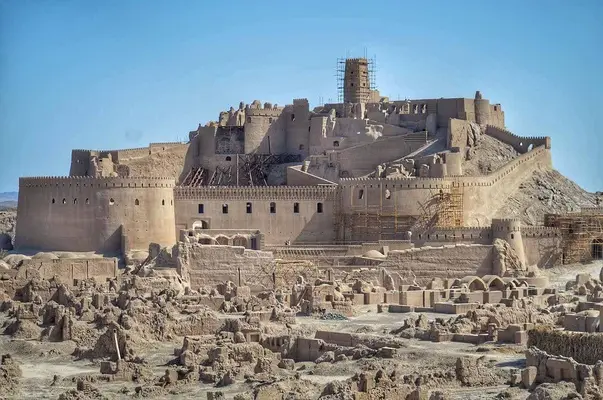
- Shahzadeh Mahan Garden
The Shahzadeh Mahan Garden, designated as a UNESCO World Heritage site, is an exquisite example of Persian garden design, embodying the concept of a paradise on earth. Located near Kerman, this garden dates back to the Qajar dynasty in the 19th century and is renowned for its sophisticated water management system, which channels water from nearby mountains into a series of fountains and pools, creating a lush oasis in the desert.
The garden’s layout is a testament to the Persian love for symmetry and nature, featuring a central pavilion that offers panoramic views of the surrounding landscape. The integration of architectural elements with natural features illustrates the Persian aesthetic of harmonizing built environments with the natural world.
Shahzadeh Mahan Garden plays a crucial role in Persian culture and architecture, serving as a model for the Persian garden design that has influenced gardens throughout the world. It’s enduring beauty and ingenious design principles celebrate the ingenuity and artistry of Persian culture, making it a must-visit site for anyone interested in the intersection of nature, architecture, and history.
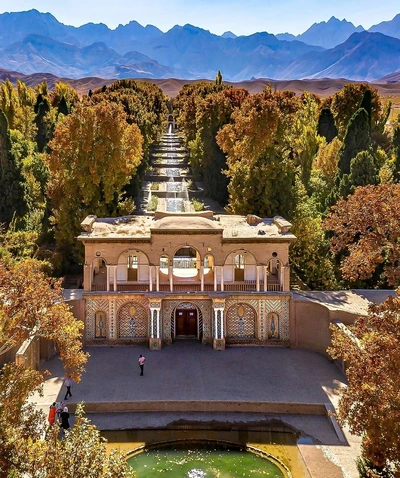
- Rocky village of Meymand
Meymand, a village sculpted into rock, traces its origins back to the Medes era as one of the first Aryan settlements. Its architecture, built for endurance, mirrors ancient beliefs in immortality, evident in dwellings and pottery dating back thousands of years from various historical periods. Hidden within the hills, Meymand’s homes are uniquely carved from tuff cliffs, showcasing ingenious design without using conventional materials, resulting in durable, insulated structures known as “Kiches.”
The village’s residents, mainly engaged in dairy farming and horticulture, lead a life closely tied to nature, with a cultural penchant for traditional crafts. Meymand enjoys distinct seasons, with spring and early fall being the best times to visit this serene locale. It offers authentic guesthouse accommodations and the chance to stay in residents’ homes, providing a real taste of life in Meymand. This historic village, with its unique lifestyle and architecture, invites visitors to delve into its rich heritage and natural beauty.
Natural Attractions of Kerman
- Lut Desert
The Lut Desert, also known as Dasht-e Lut, is one of the most extraordinary natural wonders of Iran, recognized for being one of the hottest places on Earth. This vast desert landscape stretches across the southeastern part of the country, covering an area of about 51,800 square kilometers. Its most distinctive features include the mesmerizing yardangs (long ridges), nebkhas (dunes), and the Gandom Beryan plateau, where surface temperatures have been recorded at some of the highest on the planet.
Exploring the Lut Desert offers a unique adventure into a world of extreme beauty and isolation. Visitors can embark on guided tours that include trekking, camping under the stars, and 4×4 vehicle excursions. These tours provide a safe and informative way to navigate the desert’s challenges and marvel at its vast, untouched landscapes. Activities such as photography, star gazing, and sunrise or sunset viewings are highly recommended, offering breathtaking scenes that captivate the essence of the desert’s rugged beauty.
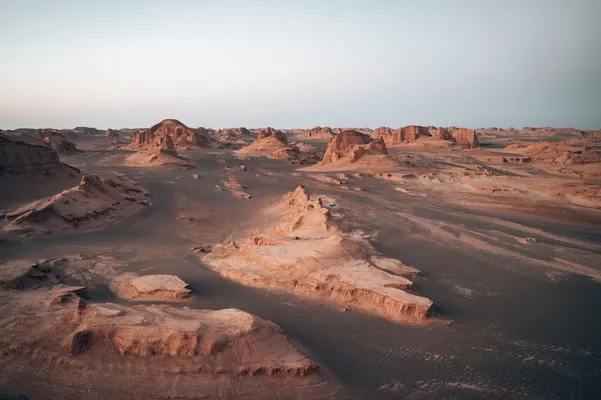
- Kalouts, Things to do in Kerman
The Kalouts, or Kaluts, are among the most stunning natural attractions within the Lut Desert. These are towering rock formations created through the process of wind erosion, sculpting the landscape into a series of dramatic shapes and ridges that stretch as far as the eye can see. The formations present an otherworldly scene, often compared to the surface of Mars, and serve as a prime example of nature’s artistry.
The best time to visit the Kalouts is during the cooler months from October to April when the desert temperatures are more bearable. Early morning or late afternoon are ideal for capturing the soft light that accentuates the formations’ textures and contours, making these times perfect for photography. The changing colors of the sky at sunrise and sunset provide a spectacular backdrop, enhancing the mystical appearance of the Kalouts.
For photographers and nature enthusiasts, the Kalouts offer an unparalleled opportunity to witness the power of natural forces in shaping the Earth’s surface. Tips for visitors include bringing adequate sun protection, plenty of water, and a guide or tour operator familiar with the desert’s terrain. A visit to the Kalouts is a journey into one of the planet’s most extraordinary landscapes, offering a moment of reflection on the beauty and vastness of the natural world.
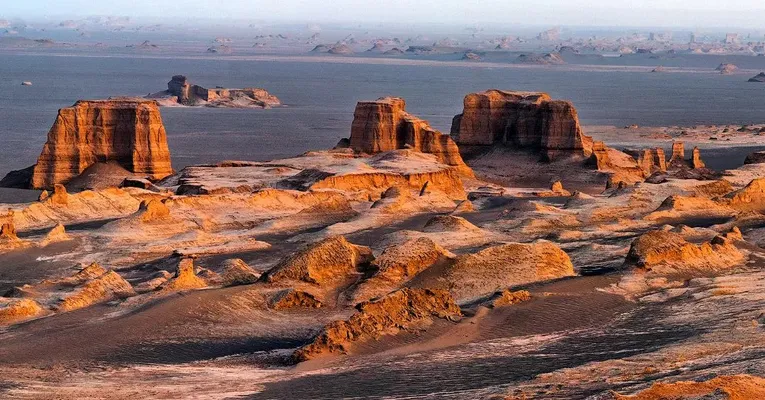
Museums and Educational Sites Kerman
- Kerman National Library
The Kerman National Library stands as a beacon of knowledge and culture in the heart of Kerman, playing a pivotal role in the preservation of Persian literature and manuscripts. This esteemed institution houses an extensive collection that spans centuries, including rare books, documents, and manuscripts that are integral to the rich tapestry of Iranian history and culture. The library’s holdings are not only significant for scholars and researchers delving into the depths of Persian history, but they also offer a fascinating insight for anyone interested in the literary and artistic heritage of Iran.
Visitors to the Kerman National Library can explore its collections during regular visiting hours, which typically include weekdays and sometimes weekends. The library also hosts special exhibits throughout the year, showcasing specific themes or highlighting rare pieces from its collection. These exhibits provide a unique opportunity for visitors to engage with Iran’s cultural heritage and gain a deeper understanding of its historical narratives.
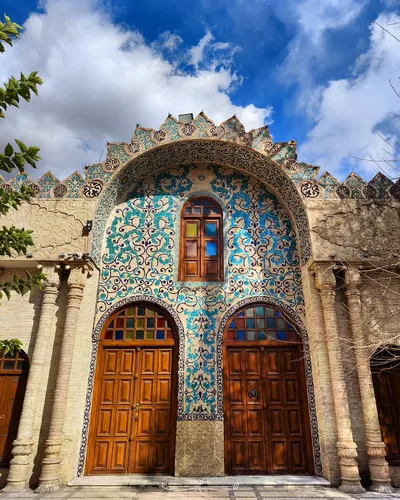
- Ganjali Khan bathroom in Kerman
Ganjali Khan, upon his reign in Kerman, constructed a vibrant public square surrounded by key buildings including a school, mosque, bazaar, and notably, a bathhouse, which became a central piece of this architectural ensemble. Completed in 989, the bathhouse served the public until 1316, later transforming into an anthropological museum in 1347 to showcase its historical significance.
Spanning 1,280 square meters, the bathhouse is celebrated for its innovative design, utilizing natural light and an advanced water heating system, alongside its artistic decorations such as mosaic tiles and intricate plasterwork. These features not only highlight the architectural genius of the era but also Ganjali Khan’s vision for Kerman.
Today, the bathhouse as the Anthropology Museum of Kerman stands as a testament to Iran’s rich cultural and architectural heritage, offering visitors a glimpse into the past through its preserved beauty and historical significance.
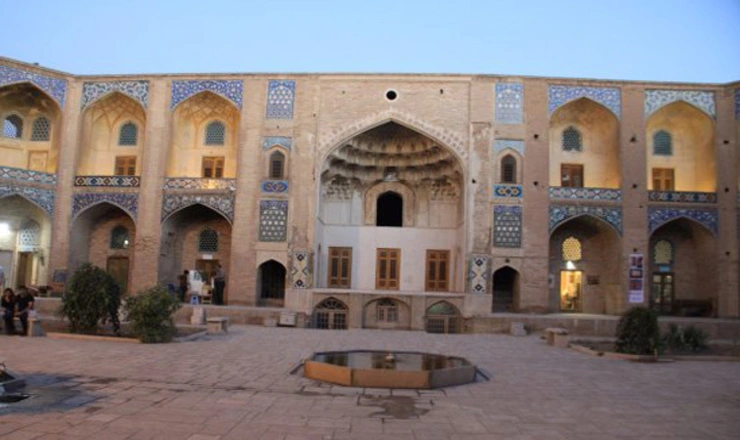
Shopping in Kerman, One of the best things to Do in Kerman
- Kerman Bazaar
The Kerman Bazaar, a bustling hub of commerce and culture, has long been a cornerstone of social and economic life in Kerman. With its origins dating back hundreds of years, the bazaar is a living museum, offering a window into the daily lives of the people of Kerman and the broader region. The bazaar’s winding alleys and domed trading halls are lined with shops and stalls selling a wide array of goods, from everyday items to exquisite handicrafts.
For those looking to take a piece of Kerman home, the bazaar is the place to find authentic Persian carpets, renowned for their quality, intricate designs, and craftsmanship. Spices, offering a taste of the region’s culinary richness, fill the air with their aromatic scents, while traditional handicrafts, such as copperware, pottery, and textiles, provide insight into the local artisans’ skill and creativity.
Shopping in Kerman Bazaar is not just about acquiring goods; it’s an experience that immerses visitors in the culture and traditions of Iran. Haggling over prices is part of the fun and allows for interaction with the local merchants, offering a glimpse into the friendly and hospitable nature of the Iranian people. Whether you’re searching for a unique souvenir or simply soaking up the vibrant atmosphere, Kerman Bazaar is a must-visit destination for anyone exploring this historic city.
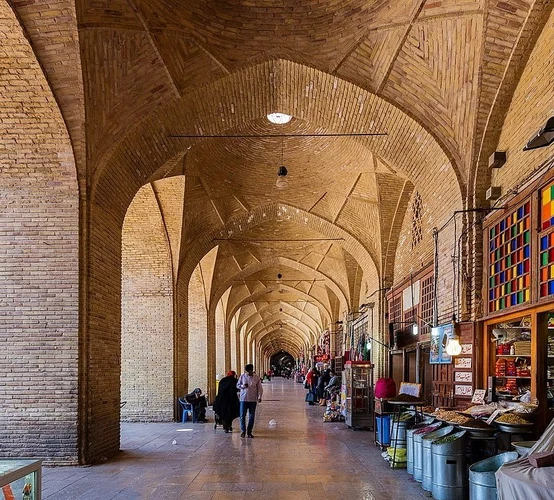
Cultural Experiences in Kerman
- Persian Carpet Weaving Workshops
Kerman is renowned for its deep-rooted tradition in carpet weaving, a craft that has been perfected over centuries and is considered one of the pillars of Persian cultural heritage. The city’s carpets are celebrated worldwide for their intricate designs, vibrant colors, and exceptional quality. These carpets often feature elaborate patterns inspired by Persian gardens and historical motifs, making them not just floor coverings but works of art.
For those interested in experiencing this traditional craft firsthand, Kerman offers Persian carpet weaving workshops. These workshops provide a unique opportunity for visitors to delve into the world of Persian carpets, learning about the various stages of carpet production from skilled artisans. Participants get to see the meticulous process of dyeing the wool, designing the patterns, and the actual weaving on looms. These workshops are not only educational but also offer a chance to appreciate the artistry and effort that goes into creating each carpet.
Visitors also have the opportunity to purchase authentic carpets directly from the workshops. Buying a carpet in this way not only ensures its authenticity but also supports the local artisans and the preservation of this ancient craft. Each carpet tells a story, and owning one is like taking a piece of Persian culture and history home.
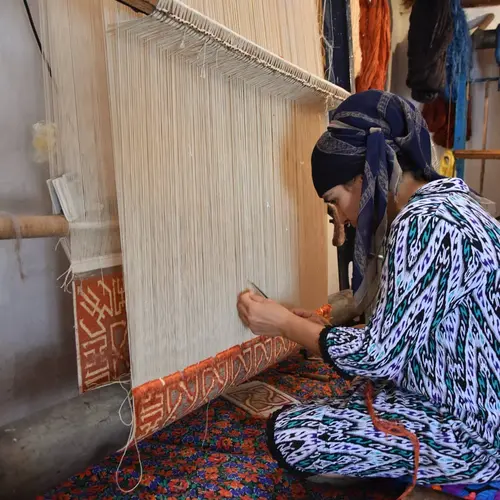
- Traditional Persian Cuisine
Kerman’s culinary landscape is as rich and diverse as its cultural heritage, offering a plethora of traditional dishes that are sure to delight any palate. Among the city’s specialties is, a unique spice blend that adds a distinctive flavor to dishes; kolompeh, a traditional Persian cookie filled with dates and flavored with cardamom and other spices; and cumin stew, a hearty and aromatic dish that showcases the region’s love for bold spices.
For those eager to sample these and other local delicacies, Kerman boasts a variety of dining venues, from traditional teahouses to contemporary restaurants. Teahouses, in particular, offer a cozy and authentic setting for enjoying not just the food but also the local culture. Here, visitors can savor traditional Persian tea alongside local sweets and snacks, all while soaking in the atmosphere of a traditional Iranian social setting.
Recommendations for the best local restaurants and teahouses often include those establishments that have been around for generations, as they offer a more authentic dining experience. These venues not only serve delicious food but also provide a glimpse into the daily life and culinary traditions of Kerman, making them a must-visit for anyone looking to immerse themselves in the local culture. Whether you’re in the mood for a savory stew or a sweet treat, Kerman’s culinary scene is sure to leave a lasting impression.
Outdoor Activities in Kerman
- Rock Climbing in Sirch
The Sirch mountains, located near Kerman, present a thrilling opportunity for adventure enthusiasts to engage in rock climbing. This area, with its rugged terrain and scenic beauty, offers routes for climbers of all skill levels, from beginners to advanced. The diverse landscape provides a variety of climbing experiences, including bouldering, sport climbing, and traditional climbing, making it a popular destination for those seeking both challenge and exploration.
Safety is paramount when it comes to rock climbing, and climbers are advised to equip themselves with the necessary gear, including helmets, harnesses, and appropriate footwear. It is also crucial to check the weather conditions before embarking on a climb, as sudden changes can impact safety. For those new to the sport or the area, joining guided climbing tours is highly recommended. These tours are led by experienced climbers who are familiar with the terrain and can provide not only technical guidance but also insights into the best spots for climbing.
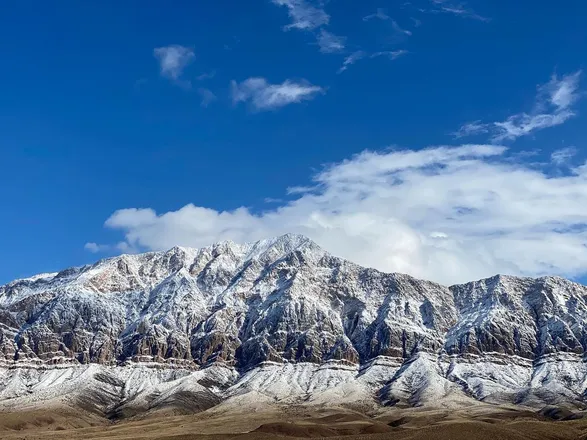
- Desert Safari and Camping
Experiencing the desert through a safari and overnight camping trip is an unforgettable adventure that allows visitors to connect with the vast landscapes and starlit skies of the Iranian desert. These trips typically involve 4×4 tours during the day, where participants can explore the dunes, rock formations, and unique flora and fauna of the desert. As night falls, camping under the stars offers a serene and profound experience, highlighting the desert’s beauty and tranquility.
When planning a desert safari and camping trip, it is essential to prioritize sustainable tourism practices to minimize environmental impact. This includes following guidelines such as leaving no trace, disposing of waste properly, and respecting wildlife and natural habitats. Campers should ensure they use eco-friendly equipment, conserve water, and avoid disturbing the natural surroundings.
Travelers interested in desert safari and camping should consider booking with reputable tour operators who emphasize eco-friendly practices and provide all necessary equipment and guidance for a safe and enjoyable experience. These tours not only offer an immersive desert adventure but also promote awareness and appreciation for the delicate ecosystems of the desert, encouraging a respectful and mindful approach to exploring the natural world.
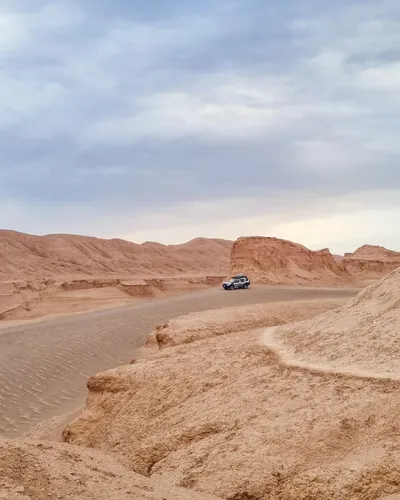
Best Time to Visit Kerman
The best time to visit Kerman, considering both weather and cultural events is during the spring (March to May) and autumn (September to November) months. During these periods, the weather is mild and pleasant, making it ideal for exploring the city’s historical sites and natural landscapes. Additionally, these seasons coincide with several local festivals and cultural events, providing visitors with a deeper insight into the region’s rich traditions and community life.
Spring is especially vibrant with Nowruz, the Persian New Year, celebrated with great enthusiasm in March. This festival brings a flurry of activities, traditional foods, and public celebrations. Autumn, on the other hand, offers cooler temperatures and the chance to experience the saffron harvest, a significant event in the region’s agricultural calendar.
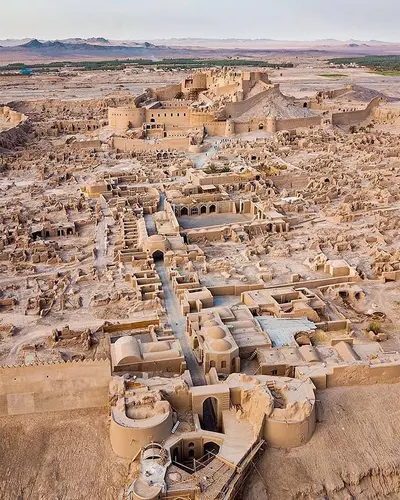
Transportation Tips in Kerman
Getting around Kerman and accessing nearby attractions can be done through various means of transportation. For intra-city travel, taxis are widely available and offer a convenient way to navigate the city. For those preferring public transport, Kerman has a network of buses that connect major points within the city. However, for a more immersive experience, consider renting a car or a bicycle or walking to explore the city’s intricate details.
For visiting attractions outside the city, such as the Lut Desert, Bam Citadel, or Shahzadeh Mahan Garden, hiring a private vehicle or joining a guided tour is recommended. These options provide the flexibility to explore at your own pace and the benefit of local knowledge from tour guides.
Accommodation Options of Kerman
Kerman offers a wide range of accommodation options to suit various preferences and budgets. For those seeking an authentic experience, traditional guesthouses (known as ecolodges or boutique hotels) provide a unique glimpse into Persian culture and hospitality. These accommodations often feature traditional Persian architecture, gardens, and courtyards, offering a serene and culturally rich environment.
For travelers looking for more conventional lodging, Kerman boasts several modern hotels ranging from budget-friendly options to luxury accommodations. These hotels offer contemporary amenities and are often conveniently located near major attractions and transport links.
Regardless of where you choose to stay, it’s advisable to book accommodation in advance, especially during peak travel seasons or local festivals, to secure the best rates and availability.
Last Word
Kerman, with its rich tapestry of cultural, historical, and natural attractions, stands as a testament to Iran’s diverse heritage and beauty. From the ancient grandeur of the Bam Citadel and the serene elegance of the Shahzadeh Mahan Garden to the adventurous landscapes of the Lut Desert and the Kalouts, Kerman invites travelers to embark on a journey through time and nature. The city’s bustling bazaars, traditional cuisine, and the art of carpet weaving offer a glimpse into the vibrant everyday life and traditions of its people. Visitors are encouraged to explore not just the well-known landmarks but also venture off the beaten path to discover the hidden gems that make Kerman a truly unique destination. Here, every corner holds a story, waiting to be discovered by those eager to immerse themselves in the full experience of what Kerman has to offer.
FAQ
What are the must-visit historical sites in Kerman?
Kerman is rich in historical landmarks. The Bam Citadel (Arg-e Bam) is a must-see; it’s the largest adobe structure in the world and offers a deep dive into Iran’s architectural history. Additionally, the Ganjali Khan Complex, featuring a mosque, bazaar, and bathhouse, showcases the exquisite Safavid-era architecture and culture.
Are there any natural attractions near Kerman?
Yes, Kerman’s proximity to the Lut Desert offers access to stunning natural landscapes. The desert is known for its mesmerizing yardangs (kaluts) and is a great spot for stargazing and experiencing the serene desert sunrise. The Shahdad Desert, part of the Lut Desert, is another highlight where you can see the world’s largest natural necropolis.
What unique cultural experiences can tourists have in Kerman?
Kerman provides a wealth of cultural experiences. Visitors can explore traditional tea houses, try local delicacies like Kolompeh (a traditional Kermani date pastry), and visit the local bazaars such as the Vakil Bazaar for authentic crafts and spices. For a deeper cultural immersion, attending a local music performance or visiting during the annual Pistachio Festival offers a glimpse into Kerman’s vibrant community life.
